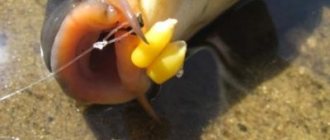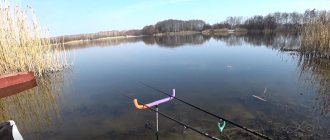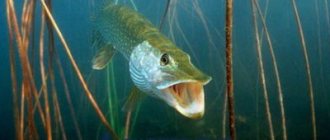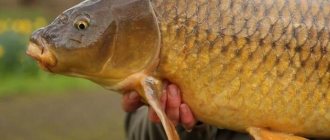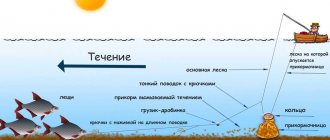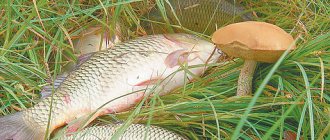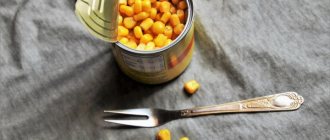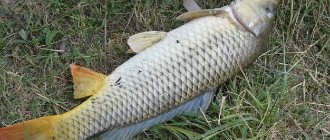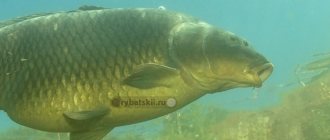Feeder rod for carp
The basis for collecting equipment is the choice of a feeder rod. Since you will have to fish long distances on currents with a decent amount of complementary food supplied in feeders, the length of the rod is selected within 3.5-4.2 meters. Test blank values are optimal in the range of 100–150 grams. For high-quality sharp hooks of a pecked trophy, choose fishing rods with a semi-fast or fast action. The presented description clearly falls under the classification of heavy or, in the fishing feeder subculture, heavy feeder.
The carbon fiber material of the blank is considered optimal for carp fishing. Such fishing rods are not heavy, but at the same time flexible and flexible, capable of withstanding repeated overloads that occur when fishing for large fish. Winding rings in heavy feeders are attached to the blank on reinforced support legs and are equipped with ceramic liners that can withstand friction from the loads of braided cords. A three-piece plug fishing rod with the ability to change the quivertype to a different type of action, three of which are sold in the tackle set, will be an ideal option that can cover all the conditions for carp feeder hunting.
Technique and tactics
Regarding the choice of fishing technique, everything depends only on the experience of the fisherman and the individual characteristics of the gear used. But the basic rules and techniques of fishing still remain the same:
- Fixing the rod after casting is a must.
- Hooking of the carp occurs spontaneously, so unnecessary movements after the bite can only do harm.
- If during fishing the carp goes into snags, then getting it out of there will be quite difficult. It is not recommended to do this on your own; the fisherman can only fix the rod on the shore again and wait until the fish comes out on its own.
- Desperate jerks of wild carp can exhaust a fisherman. The fish will resist to the last, so you shouldn’t relax.
Coil
The selected form is equipped with an inertia-free reel, which has a high traction force, about 5 units, and numbering along the spool in values of 4500–5000. The optimal number of bearings to ensure harmonious and smooth operation of the mechanism is 5–7 pieces. The capacity of the spool is due to the use of relatively thick main cords in long sections, at least 100 meters. The feeder tackle must, with its clamping element, press the fastening leg of the reel to the butt handle without play, while at the same time eliminating excessive tension.
Important! As in carp fishing, the functionality of a carp spinning reel requires a finely adjustable friction brake, which is practical for fishing due to its location in the rear part of the mechanism body.
The presence of a bayrunner function is also required. The baitrunner will protect the gear from being pulled into the water and will allow the angler to comfortably conduct feeder hunting in parallel with several rods.
Line or cord
Feeder gear in carp fishing works over long distances and in practice, the use of braided cords is much more effective than nylon lines. The bites of even this powerful fish are not always distinguished by distinct blows and locomotive pulls, which is more typical of carp. Carp during periods of low activity can take a long time to try the bait. The signal from these actions with a long length of nylon stretch cord will not be transmitted to the quivertip of the rod.

Important! Rigid braided lines clearly convey even small fish pokes, which can be used to guide you at the time of hooking even with a sluggish bite.
Braids are used in diameters starting from 0.2 mm, without particularly paying attention to color, because thinner equipment will be used to complete the installation. Equipping a feeder with a monofilament line is justified only at fishing distances of 20–25 meters, as well as in combination with braided fishing using a shock leader fishing method. Shock leaders are necessary when fishing on shell rocks, as monofilament is more resistant to abrasion than braided line. Monofilament transparent fishing lines are selected in diameters starting from 0.3 mm, with low memory and the ability of the thread to be arbitrarily immersed in water.
Read in more detail what is better to put braid or fishing line on the feeder and what this choice depends on.
Features of the feeder and why we choose this gear
This method of catching carp is the easiest and most effective. Ardent and devoted “hunters” of carp probably know this. It often happens that the carp breaks off the gear or, as the fishermen themselves like to say, saws it off. With the help of a feeder you can catch a really big fish.
Video with the process of landing a large carp.
Feeder gear allows you to fish individual areas near the shore and more distant ones.
In order for the device to justify itself, it is necessary to use a powerful feeder rod . Parameters such as:
- Line section.
- Form length range.
- Length of a piece of monofilament.
- The need to use fluorocarbon.
Depends on the characteristics of the fishing location and the estimated age and weight of the prey.
Feeder advantages:
- Simplicity and ease of use. Catching carp on a feeder in unfamiliar places and in cases where the fisherman prefers not to bother with the process of pulling out the fish directly with his hands using a fishing line.
- High level of sensitivity. Even after casting the feeder at a distance of more than 100 meters, a bite the size of a little finger is clearly visible.
- Possibility of casting a heavy and powerful feeder over a long distance. “Krupnyak” almost always lives as far from the coast as possible.
- Flexibility. Thanks to the presence of replaceable tips, the rod can be used for different conditions and the weight of the feeder used.
- There is no need to use additional signaling devices, as, for example, for spinodonka. The use of such attributes significantly reduces the number of observed bites.
- The ability to fish both areas near the shore and make ultra-long casts.
Feeder tackle for carp
Carp live in rivers with moderate currents, the strength of which has a significant impact on the rigs installed for fishing, and they, in turn, require structures that, in addition to transmitting a distinct bite signal, can stably hold the fishing point without moving from the fed areas.
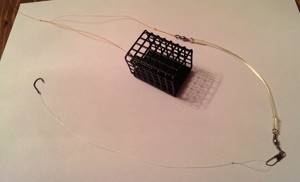
Inline equipment
For currents, gear is supplemented with inline-type installations using method and spring feeders. An asymmetrical loop is practical to knit; in this case, a cage feeder is used. The techniques presented above make the equipment more sensitive, but at the same time capable of using heavy feeders that hold well on the bottom in moderate currents. It is recommended to attach the mounting used to the main cord through a tandem carabiner with a swivel. In places where feeders may come into contact with knots, damper beads must be used to protect the strings from impacts during casting. The tied equipment is made from thinner braided cords than the main one or from monofilament.
Mesh feeders are more practical in the shape of a parallelepiped. When mating inline, springs that are weighted by loading the feeder or purely method versions of the accessory with ribs for attaching the feeding mixture are used. Leashes are made of fluorocarbon or nylon. This material is less noticeable to fish and does not cause unnecessary suspicion when eating bait.
Important! Fishing practice shows that it is more effective to catch carp on short leashes not exceeding 20 cm in length.
Hooks are selected based on the bait used. Animal baits are placed on hooks with an extended shank. Plant baits are mounted on short hooks. It is advisable to use dark colored hooks, black, blue or brown. The flash of silver or golden hooks scares away the fish.
Choosing a place to catch carp
Carp is very fond of snags and large tree debris. In summer, it actively moves around the reservoir in search of food, so the bright trail of bait is very important for effective fishing. Despite large movements around the reservoir, cyprinids adhere to their constant routes and feeding places. For an inexperienced fisherman, choosing a place to catch carp can take a long time, so you need to be prepared for zero results. For experienced fishermen who have already encountered this worthy fish, choosing a place will not cause much trouble.
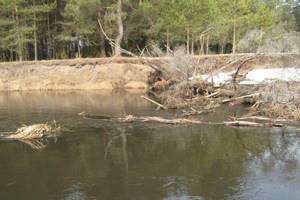
The fishing technique is calm and passive; it is necessary to feed the fishing area in advance. Then throw the feeder with the feeder to the intended place next to a snag or tree hanging into the water and wait. It is better to use a feeder rig with a free swing of the hook, this is necessary so that the fish swallows the bait without feeling the weight of the sinker. The carp's bite is careful, but reliable, and if it has swallowed a hook with bait, hooking it will not be difficult, unlike fishing. Slack fishing line when fishing for carp is unacceptable! When fishing for carp, you need to be extremely focused, ready for anything. A carp caught on a hook creates powerful resistance and makes unexpected feints in order to cut the line with its dorsal fin, which has serrations like a jigsaw file. The carp spins in one place, trying to weaken, and then pick up and cross the line. When fishing, it is necessary not to force the winding of the fishing line, but also not to let it weaken, but with pumping movements, slowly pull the trophy to the shore. Adjust the clutch on the reel; the line reserve should be about 100 meters so that the line can withstand the powerful jerks of the river carp. It is imperative to have a good hook with a long handle.
Lure
Without effective attachment with feeding compounds, catching carp becomes quite difficult and, in most cases, futile. Despite its natural gluttony, the fish is selective in its taste preferences, which vary from body of water to body of water with their own nuances.

Throughout the established practice of feeder hunting for this subspecies of carp, fishermen have selected universal bases of feeding mixtures, the addition of a certain type of attractant to which contributes to the success of fishing. The basis of feeding is made from a brew of millet or barley porridge, adding fish feed and sweet breadcrumbs to the mixture. The prepared porridge is not decanted, leaving the broth as an element that glues the components together.
The balls supplied to the fishing zone must quickly reach the bottom and remain in a dense state for some time, only creating a trail of turbidity. The turbidity plume is provided by adding powdered milk or raw semolina to mixed mixtures. Soils containing clay serve as weighting agents and thinners. Vegetable ingredients in the form of sweet canned corn, crushed boiled potatoes and peas are combined with an animal base, mixing chopped worms, crushed bloodworms and canned maggots in mixed mixtures.
Important! The pulp of crushed shells living in the fishing zone contributes to the rapid approach of fish to the feeding point.
Attractants for tackle charged with the bait described above can be vanilla, cinnamon, honey and strawberry essence. Carp are responsive to sweet tastes, and in some reservoirs the smells of banana, chicory and the mixed attractant tutti-frutti can become fishing hits.
Lures
Carp are omnivores and, if available, can feed on plant and animal foods. It is worth noting that carp fishing in autumn and early spring is carried out using baits of animal origin. In the summer season, fish prefer bait of plant origin. The animal bait in the classic is a bunch of dung worm. Bloodworms and maggots will always be preferable when fishing for carp in a place unfamiliar to the angler. It is worth trying to fish for the meat of shells that live in fishing reservoirs. Carp love to feast on the meat of molting crayfish, and during the insect season, carrion, collecting drowning grasshoppers and chafers.
The diet of plant foods includes grains of all cereals, which are boiled or steamed until soft before serving to fish. Canned sweet corn and green pot kernels are ideal for catching ravenous eaters in warm waters. Young potatoes, boiled with small tubers to a state that does not allow the vegetable to crumble, are considered a promising bait for July. From carp fishing to carp feeder fishing, the technique of fishing with boilies has successfully migrated. To catch carp, large balls with a diameter of 3 cm are used, choosing fruit flavors.
